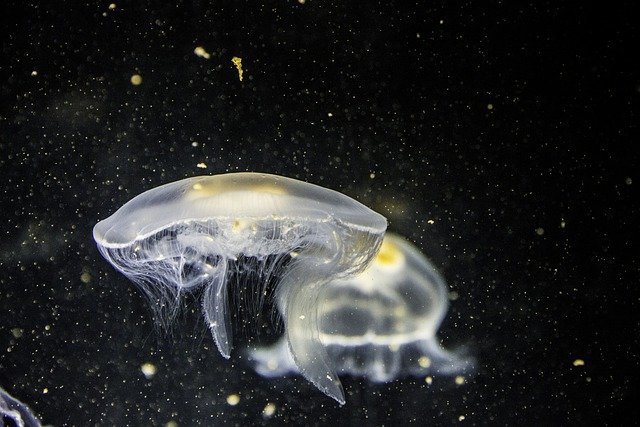
Greetings to all Lakshmi friends.
Jellyfish: The Mysterious Secrets of Sea Creatures
Jellyfish, with their unique beauty and mystery, are one of the sea creatures that most attract the attention of researchers and nature enthusiasts. They are members of the phylum Cnidaria and class Scyphozoa, and consist of various species widely distributed in the world's oceans. The following will explain several interesting aspects about jellyfish:
Anatomy and Physical Characteristics
Jellyfish have bodies composed mostly of water bubbles called "umbrellas," which form their transparent and often colorful bodies. At the bottom of the umbrella there are structures called tentacles, which have thousands of cells called nematocysts which are used to catch prey.
Habitat and Distribution
They are found in all the world's oceans, from tropical to polar waters. Some species of jellyfish can be found in shallow waters, while others live at greater depths. They are often seen in warm waters, but some species can also survive in cold waters.
Diet and Reproduction
Jellyfish are active predators, and their prey usually consists of plankton, small fish, and other small marine organisms that they catch with the help of their nematocysts. Some species are also able to capture larger prey by coordinating the movements of their tentacles.
Jellyfish reproduction involves a complex life cycle, including the medusa stage (which is the adult stage we know), and the polyp stage which resides on the sea floor. In the medusa stage, jellyfish reproduce sexually by releasing eggs and sperm into the water.
Interaction with Humans
Despite their eye-catching beauty, jellyfish can also be dangerous to humans. Some species have stings that can cause pain or even severe allergic reactions in affected humans. However, not all jellyfish are poisonous, and many of them are harmless to humans.
Protection and Conservation
Climate change and marine pollution are serious threats to jellyfish populations worldwide. Some areas have taken steps to protect and maintain jellyfish populations, including regulating tourism and water use to minimize negative impacts on these creatures.
Conclusion
Jellyfish are a stunning example of marine biodiversity. With their unique adaptations to diverse marine environments, as well as their important role in marine ecosystems, they are important research subjects for marine scientists. A better understanding of jellyfish could not only reveal the secrets of their lives, but also help in global marine conservation efforts.
Thank you and see you again.
Downvoting a post can decrease pending rewards and make it less visible. Common reasons:
Submit
Upvoted. Thank You for sending some of your rewards to @null. It will make Steem stronger.
Downvoting a post can decrease pending rewards and make it less visible. Common reasons:
Submit
You've got a free upvote from witness fuli.
Peace & Love!
Downvoting a post can decrease pending rewards and make it less visible. Common reasons:
Submit